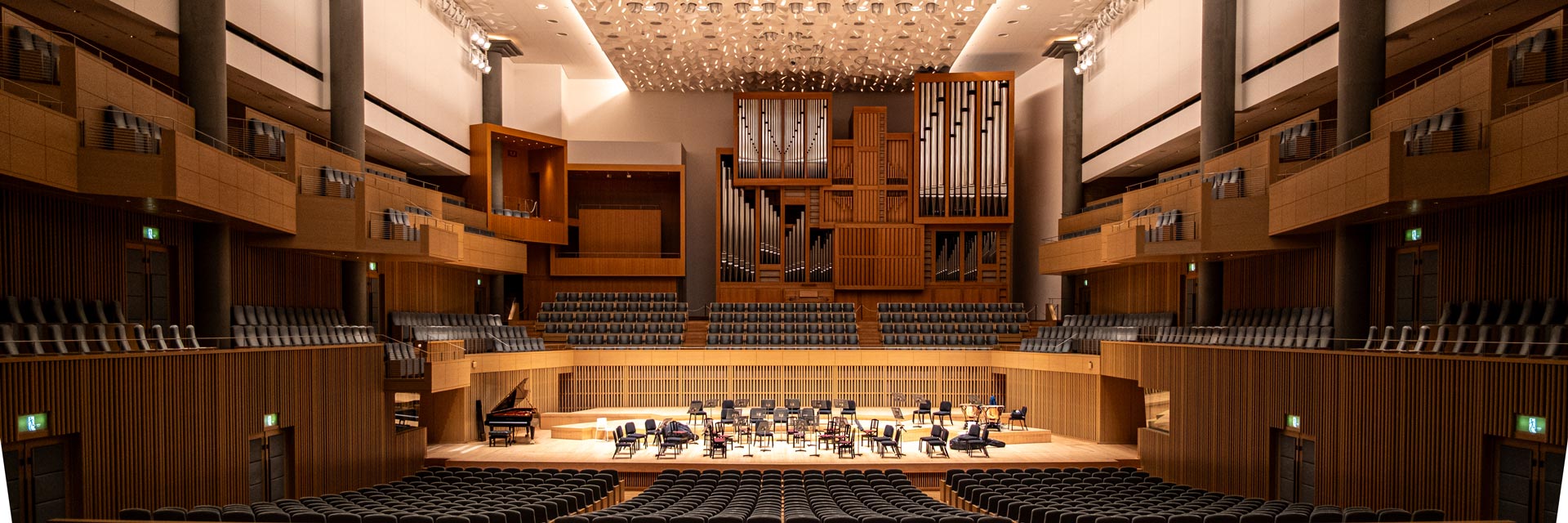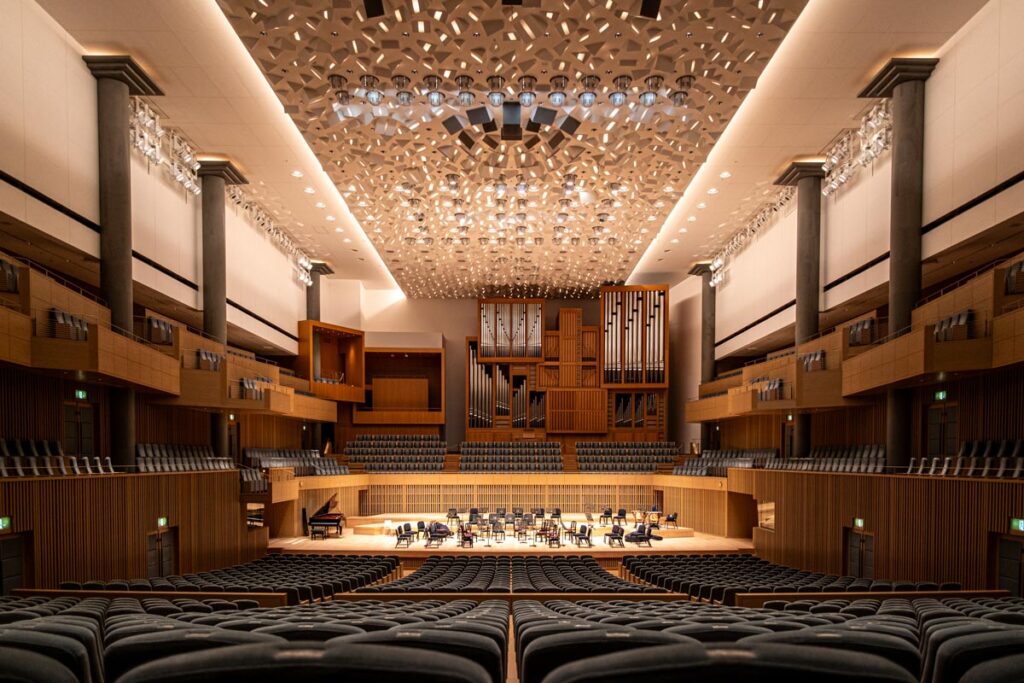Kyoto is a city you can – and should – explore on foot. Leave behind the big, noisy, bustling main streets and lose yourself in the wonderfully charming web of old alleyways in between instead – you’ll discover plenty.
Quiet temples that somehow shut out the noise of the metropolis as if by magic, timeworn artisanal workshops, excellent and surprisingly inexpensive restaurants (if you still throw yourself into the Nishiki Market for food, you only have yourself to blame), plus a handful of small bars and cafés where they play carefully curated music selections – sometimes even on vinyl. If you ignore the tourist-beaten tracks, toss out the guidebook schedule, and simply let the city lead you, Kyoto is nothing short of amazing. And if you keep walking, preferably northward, you’ll eventually end up in a quaint residential area on the city’s northern edge at the Kyoto Concert Hall – a still surprisingly fresh looking cultural center built in 1995 that has two halls and also happens to be home to the Kyoto Symphony Orchestra. The main hall is a classic shoebox design, seating 1,833 people in very comfortable armchairs.
For us musicians, the hall presents itself as welcoming indeed – and on a long tour, every little comfort is something to be grateful for. And there are plenty here: just a few steps from the stage door to backstage, spacious dressing rooms nearby, and an excellent tea selection. With such a positive start, even a mediocre stage would be tolerable. But the Kyoto Concert Hall keeps on giving: One big plus is the bright, glare-free lighting. You’d be surprised how often it’s hard to read your music because of poor lighting – or how often a blinding spotlight makes it impossible to see the conductor. Not here. Everything’s just right. The heavy stage machinery for the movable platforms is equally impressive: every section adjusts quickly and quietly to any height, and once in place, everything’s solid as a rock. That’s far from standard. I’ve been on large stages where the brass players next to me could barely keep their mouthpieces steady if I had to move too energetically during a Bruckner symphony.
The acoustics, like in many Japanese halls, are outstanding – beautifully transparent all the way to the back row, but without the razor-sharp precision that can sometimes spoil the fun. On stage, the sound is more direct; you hear yourself maybe a bit too loudly, but still well balanced against your colleagues. As is typical for this kind of design, the feedback from the hall is slightly delayed but thorough.
And just like on the way to the hall: let the orchestra bus carry the colleagues. I, for one, spotted an okonomiyaki place and a bar with an excellent Burgundy selection nearby. Sometimes, the journey really is the destination.


